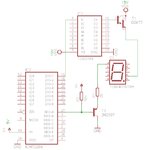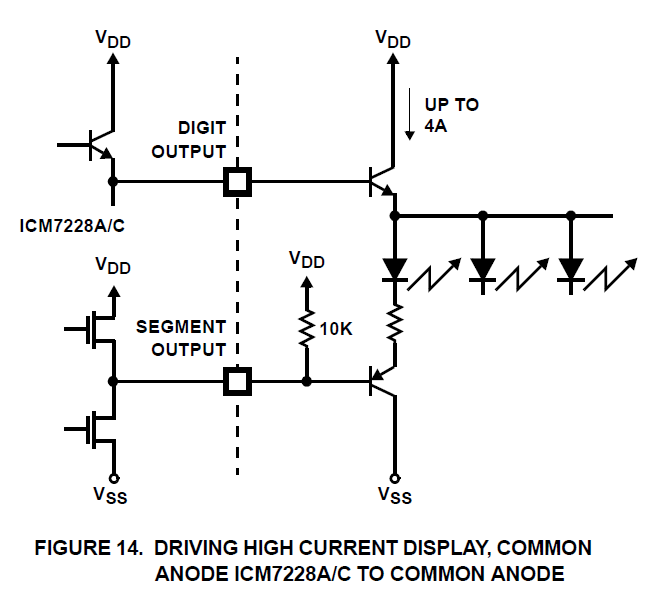florinalex
Junior Member level 1
I have a setup with 6 large 7-segment common anode displays (TOS-40101BH - high brightness, 5 LEDs per segment) running multiplexed. The problem is that the display brightness is much lower than expected. I am using a ICM7228A display driver along 6 x BD677 transistors for driving the anodes and 7 x 2N2907 transistors for driving the displays' cathodes and a TD62783 for turning on the BD677 transistors. The power supply is 15V/1.5A. The whole system functions properly, but not at the expected brightness.
Can someone have a look at the attached schematic and tell me if the design is wrong? What should I do to increase the brightness of the displays?
Can someone have a look at the attached schematic and tell me if the design is wrong? What should I do to increase the brightness of the displays?

